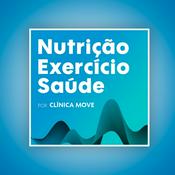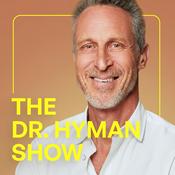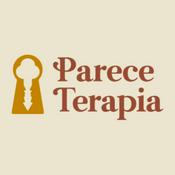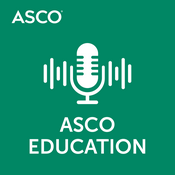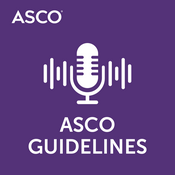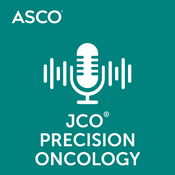281 episódios

What Challenges Will Oncologists Face in 2026?
04/12/2025 | 22min
Dr. Monty Pal and Dr. Jason Westin discuss the federal funding climate for cancer research and the persistent problem of drug shortages, two of the major concerns facing the oncology community in 2026. TRANSCRIPT Dr. Monty Pal: Hello and welcome to the ASCO Daily News Podcast. I am your host, Dr. Monty Pal. I am a medical oncologist and vice chair of academic affairs at the City of Hope Comprehensive Cancer Center in Los Angeles. There are always multiple challenges facing oncologists, and today, we discuss two of them that really stand out for 2026: threats to federal funding for cancer research and the persistent problem of drug shortages. I am thrilled to welcome Dr. Jason Westin, who believes that one way to meet these challenges is to get oncologists more involved in advocacy, and he will share some strategies to help us meet this moment in oncology. Dr. Westin is a professor in the Department of Lymphoma and Myeloma at the University of Texas MD Anderson Cancer Center, but he actually wears a lot of hats within ASCO. He is a member of the Board of Directors and has also previously served as chair of ASCO's Government Relations Committee. And he is also one of the inaugural members of ASCO's Political Action Committee, or PAC. He has testified before Congress about drug shortages and many other issues. Dr. Westin, I am really excited to have you on the podcast today and dive into some of these elements that will really impact our community in 2026. Thanks so much for joining us today. Dr. Jason Westin: Thank you for having me. Dr. Monty Pal: You've had such a range of experience. I already alluded to you testifying before Congress. You've actually run for office before. You wear so many different hats. I'm used to checking my PubMed every other day and seeing a new paper out from you and your group, and you publish in the New England Journal [of Medicine] on practice-setting standards and the diseases that you treat. But you've also done all this work in the domain of advocacy. I can't imagine that balancing that is easy. What has sort of motivated you on the advocacy front? Dr. Jason Westin: Advocacy to me is another way to apply our skills and help more people than just those that you're sitting across from at the time. Clinical research, of course, is a tool to try and take what we know and apply it more broadly to people that you'll never meet. And advocacy, I think, can do the same thing, where you can have a conversation with a lawmaker, you can advocate for a position, and that hopefully will help thousands or maybe even more people down the road who you'd never get to directly interact with. And so, I think it's a force multiplier in the same way that research can be. And so, I think advocacy is a wonderful part of how doctors care for our patients. And it's something that is often difficult to know where to start, but once people get into advocacy, they can see that the power, the rewarding nature of it is attractive, and most people, once they get going, continue with that through the rest of their career. Dr. Monty Pal: So, I'll ask you to expand on that a little bit. We have a lot of our younger ASCO members listening to this podcast, folks that are just starting out their careers in clinical practice or academia. Where does that journey begin? How do you get to the point that you're testifying in front of Congress and taking on these bigger sort of stances for the oncology community? Dr. Jason Westin: Yeah, with anything in medicine and in our careers, you have to start somewhere. And often you start with baby steps before you get in front of a panel of senators or other high-profile engagement opportunities. But often the first setting for junior colleagues to be engaged is doing things – we call them "Hill Days" – but basically being involved in kind of low-stakes meetings where you're with a group of peers, some of whom have done this multiple times before, and can get engaged talking to members of representatives' offices, and doing so in a way where it's a natural conversation that you're telling a story about a patient in your clinic, or that you're telling a personal experience from a policy that impacted your ability to deliver optimal care. It sounds stressful, but once you're doing it, it's not stressful. It's actually kind of fun. And it's a way that you can get comfort and skill with a group of peers who are there and able to help you. And ASCO has a number of ways to do that, both at the federal level, there's the Hill Day where we each April have several hundred ASCO members travel to Capitol Hill. There's also state engagement that can be done, so-called visiting at home, when representatives from the U.S. Congress or from state legislators are back in district. You can meet with your own representatives on behalf of yourself, on behalf of your organization, and advocate for policies in a way that can be beneficial to your patients. But those initial meetings that are in the office often they're low stakes because you could be meeting not with the representative but with their staff. And that staff sometimes is as young or even younger than our junior colleagues. These sometimes can be people in their 20s, but they're often extremely knowledgeable, extremely approachable, and are used to dealing with people who are new to advocacy. But they actually help make decisions within the office. So it's not a waste of time. It's actually a super useful way to engage. So, it's that first step of anything in life. The activation energy is always high to do something new. But I'd encourage people who are listening to this podcast already having some level of interest about it to explore ways that they could engage more. Dr. Monty Pal: You know, I have to tell you, I'm going to riff on what you just said for a second. ASCO couldn't make it any easier, I think, for folks to participate and get involved. So, if you're listening to this and scratching your head and thinking, "Well, where do I begin? How do I actually sign on for that meeting with a local representative?" Go to the ASCO ACT Network website. And I'll actually talk to our producer, Geraldine, to make sure we've got a link to that somewhere associated with this podcast after it's published, Jason, but I actually keep that on my browser and it's super easy. I check in there every now and then and see if there's any new policy or legislation that ASCO, you know, is sort of taking a stance on, and it gives me some fodder for conversation with my local representatives too. I mean, it's just an awesome, awesome vehicle. I'm going to segue right from there right to the issues. So, you and I are both at academic centers. You know, I think this is something that really pervades academia and enters into implications for general clinical practice. There's been this, you know, massive sort of proposal for decreased funding to the NCI and to the NIH and so forth. Tell us what ASCO is doing in that regard, and tell us perhaps how our community can help. Dr. Jason Westin: We live in interesting times, and I think that may be an understatement x 100. But obviously investments in research are things that when you're at an academic center, you see and feel that as part of your daily life. Members of Congress need to be reminded of that because there's a lot of other competing interests out there besides investing in the future through research. And being an elected representative is a hard job. That is something where you have to make difficult choices to support this, and that may mean not supporting that. And there's lots of good things where our tax dollars could be spent. And so, I'm sympathetic to the idea that there's not unlimited resources. However, ASCO has done an excellent job, and ASCO members have led the charge on this, of stating what research does, what is the benefit of research, and therefore why should this matter to elected representatives, to their staff, and to those people that they're elected to serve. And ASCO has led with a targeted campaign to basically have that message be conveyed at every opportunity to elected representatives. And each year on Hill Day, one of the asks that we have is to continue to support research: the NCI, NIH, ARPA-H, these are things that are always in the asks to make sure that there's appropriate funding. But effectively playing offense by saying, "It's not just a number on a sheet of paper, this is what it means to patients. This is what it means to potentially your loved ones in the future if you are in the opposite situation where you're not on the legislative side, but you're in the office receiving a diagnosis or receiving a difficult piece of news." We only have the tools we have now because of research, and each breakthrough has been years in the making and countless hours spent funded through the engine of innovation: clinical research and translational research. And so ASCO continues to beat that drum. You mentioned earlier the ACT Network. Just to bring that back again is a very useful, very easy tool to communicate to your elected representatives. When you sign up on the ASCO ACT website, you get emails periodically, not too much, but periodically get emails of, "This is a way you can engage with your lawmakers to speak up for this." And as you said, Monty, they make it as easy as possible. You click the button, you type in your address so that it figures out who your elected representatives are, and then it will send a letter on your behalf after like five clicks to say, "I want you to support research. I want you to vote for this particular thing which is of interest to ASCO and by definition to members of ASCO." And so the ACT Network is a way that people listening can engage without having to spend hours and significant time, but just a few clicks can send that letter to a representative in Congress. And the question could be: does that matter? Does contacting your senator or your elected representative do anything? If all they're hearing is somebody else making a different argument and they're hearing over and over again from people that want investments in AI or investments in something else besides cancer research, whatever it is, they may think that there's a ground shift that people want dollars to be spent over here as opposed to at the NIH or NCI or in federally funded research. It is important to continue to express the need for federal funding for our research. And so, it really is important for folks to engage. Dr. Monty Pal: 100%. One of the things that I think is not often obvious to a lot of our listeners is where the support for clinical trials comes from. You know, you've obviously run the whole gamut of studies as have I. You know, we have our pharmaceutical company-sponsored studies, which are in a particular bucket. But I would say that there's a very important and critical subset of studies that are actually government funded, right? NCI-funded clinical trials. If you don't mind, just explain to our audience the critical nature of the work that's being done in those types of studies and if you can, maybe compare and contrast the studies that are done in that bucket versus perhaps the pharmaceutical bucket. Dr. Jason Westin: Both are critical, and we're privileged that we have pharma studies that are sponsored and federally funded clinical research. And I think that part of a healthy ecosystem for us to develop new breakthroughs has a need for both. The pharma sponsored studies are done through the lens of trying to get an approval for an agent that's of interest so that the pharma company can then turn around and use that outside of a clinical trial after an FDA approval. And so those studies are often done through the lens of getting over the finish line by showing some superiority over an existing treatment or in a new patient population. But they're done through that lens of kind of the broadest population and sometimes relatively narrow endpoints, but to get the approval so that then the drug can be widely utilized. Clinical trials done through cooperative groups are sometimes done to try and optimize that or to try and look at comparative things that may not be as attractive to pharma studies, not necessarily going for that initial approval, but the fine tuning or the looking at health outcomes or looking at ensuring that we do studies in representative populations that may not be as well identified on the pharma sponsored trials, but basically filling out the gaps in the knowledge that we didn't gain from the initial phase 3 trial that led to the approval. And so both are critical. But if we only do pharma sponsored trials, if we don't fund federally supported research and that dries up, the fear I have, and many others have, is that we're going to be lacking a lot of knowledge about the best ways to use these great new therapies, these new immune therapies, or in my team, we do a lot of clinical trials on CAR T-cell therapies. If we don't have federally funded research to do the important clinical studies, we'll be in the dark about the best ways to use these drugs, and that's going to be a terrible shame. And so we really do need to continue to support federal research. Dr. Monty Pal: Yeah, there are no softball questions on this podcast, but I think everybody would be hard pressed to think that you and I would come on here and say, "Well, no, we don't need as much money for clinical trials and NCI funding" and so forth. But I think a really challenging issue to tackle, and this is something we thought to ask you ahead of the podcast, is what to do about the general climate of, you know, whether it's academic research or clinical practice here that seems to be getting some of our colleagues thinking about moving elsewhere. I've actually talked to a couple of folks who are picking up and moving to Europe for a variety of considerations, other continents, frankly. The U.S. has always been a leader when it comes to oncology research and, one might argue, research in general. Some have the mindset these days that we're losing that footing a little bit. What's your perspective? Are you concerned about some of the trends that you're seeing? What does your crystal ball tell you? Dr. Jason Westin: I am highly concerned about this. I think as you said, the U.S. has been a leader for a long time, but it wasn't always. This is not something that's preordained that the world-leading clinical research and translational research will always be done in the United States. That is something that has been developed as an ecosystem, as an engine for innovation and for job development, new technology development, since World War II. That's something that through intentional investments in research was developed that the best and brightest around the world, if they could choose to go anywhere, you wanted them to come to work at universities and academic places within the United States. And I think, as you said, that's at risk if you begin to dry up the investment in research or if you begin to have less focus on being engaged in research in a way that is forward thinking, not just kind of maintaining what we do now or only looking at having private, for profit sponsored research. But if you don't have the investment in the basic science research and the translational research and the forward-thinking part of it, the fear is that we lose the advantage and that other countries will say, "Thank you very much," and be happy to invest in ways to their advantage. And I think as you mentioned, there are people that are beginning to look elsewhere. I don't think that it's likely that a significant population of researchers in the U.S. who are established and have careers and families – I don't think that we're going to see a mass exodus of folks. I think the real risk to me is that the younger, up-and-coming people in undergraduate or in graduate school or in medical school and are the future superstars, that they could either choose to go into a different field, so they decide not to go into what could be the latest breakthroughs for cancer patients but could be doing something in AI or something in a different field that could be attractive to them because of less uncertainty about funding streams, or they could take that job offer if it's in a different country. And I think that's the concern is it may not be a 2026 problem, but it could be a 2036 or a 2046 problem that we reap what we sow if we don't invest in the future. Dr. Monty Pal: Indeed, indeed. You know, I've had the pleasure of reviewing abstracts for some of our big international meetings, as I'm sure you've done in the past too. I see this trend where, as before, we would see the preponderance of large phase 3 clinical trials and practice setting studies being done here in the U.S., I'm seeing this emergence of China, of other countries outside of the U.S. really taking lead on these things. And it certainly concerns me. If I had to sort of gauge this particular issue, it's at the top of my list in terms of what I'm concerned about. But I also wanted to ask you, Jason, in terms of the issues that are looming over oncology from an advocacy perspective, what else really sort of keeps you up at night? Dr. Jason Westin: I'm quite concerned about the drug shortages. I think that's something that is a surprisingly evergreen problem. This is something that is on its face illogical that we're talking about the greatest engine for research in the world being the United States and the investment that we've made in drug development and the breakthroughs that have happened for patients all around the world, many of them happen in the United States, and yet we don't necessarily have access to drugs from the 1970s or 1980s that are cheap, generic, sterile, injectable drugs. This is the cisplatins and the vincristines and the fludarabine type medications which are not the sexy ones that you see the ads in the magazine or on TV at night. These are the backbone drugs for many of our curative intent regimens for pediatrics and for heme malignancies and many solid tumors. And the fact that that's continuing to be an issue is, in my opinion, a failure to address the root causes, and those are going to require legislative solutions. The root causes here are basically a race to the bottom where the economics to invest in quality manufacturing really haven't been prioritized. And so it's a race to the cheapest price, which often means you undercut your competitor, and when you don't have the money to invest in good manufacturing processes, the factory breaks down, there's no alternative, you go into shortage. And this has been going on for a couple of decades, and I don't think there's an end in sight until we get a serious solution proposed by our elected officials. That is something that bothers me in the ways where we know what we should be doing for our patients, but if we don't have the drugs, we're left to be creative in ways we shouldn't have to do to figure out a plan B when we've got curative intent therapies. And I think that's a real shame. There's obviously a lot of other things that are concerning related to oncology, but something that I have personally had experience with when I wanted to give a patient a CAR T-cell, and we don't have a supply of fludarabine, which is a trivial drug from decades ago in terms of the technology investments in genetically modified T-cells, to not then have access to a drug that should be pennies on the dollar and available at any time you want it is almost like the Air Force investing in building the latest stealth bomber, but then forgetting to get the jet fuel in a way that they can't use it because they don't have the tools that they need. And so I think that's something that we do need to have comprehensive solutions from our elected officials. Dr. Monty Pal: Brilliantly stated. I like that analogy a lot. Let's get into the weeds for a second. What would that proposal to Congress look like? What are we trying to put in front of them to help alleviate the drug shortages? Dr. Jason Westin: We could spend a couple hours, and I know podcasts usually are not set up to do that. And so I won't go through every part. I will direct you that there have been a couple of recent publications from ASCO specifically detailing solutions, and there was a recent white paper from the Senate Finance Committee that went through some legislative solutions being explored. So Dr. Gralow, ASCO CMO, and I recently had a publication in JCO OP detailing some solutions, more in that white paper from the Senate Finance. And then there's a working group actually going through ASCO's Health Policy Committee putting together a more detailed proposal that will be published probably around the end of 2026. Very briefly, what needs to happen is for government contracts for purchasing these drugs, there needs to be an outlay for quality, meaning that if you have a manufacturing facility that is able to deliver product on time, reliably, you get a bonus in terms of your contract. And that changes the model to prioritize the quality component of manufacturing. Without that, there's no reason to invest in maintaining your machine or upgrading the technology you have in your manufacturing plant. And so you have bottlenecks emerge because these drugs are cheap, and there's not a profit margin. So you get one factory that makes this key drug, and if that factory hasn't had an upgrade in their machines in 20 years, and that machine conks out and it takes 6 months to repair or replacement, that is an opportunity for that drug to go into shortage and causes a mad dash for big hospitals to purchase the drug that's available, leaving disparities to get amplified. It's a nightmare when those things happen, and they happen all the time. There are usually dozens, if not hundreds, of drugs in shortage at any given time. And this has been going on for decades. This is something that we do need large, system-wide fixes and that investment in quality, I think, will be a key part. Dr. Monty Pal: Yeah, brilliantly said. And I'll make sure that we actually include those articles on the tagline for this podcast as well. I'll talk to our producer about that as well. I'm really glad you mentioned the time in your last comment there because I felt like we just started, but in fact, I think we're right at our close here, Jason, unfortunately. So, I could have gone on for a couple more hours with you. I really want to thank you for these absolutely terrific insights and thank you for all your advocacy on behalf of ASCO and oncologists at large. Dr. Jason Westin: Thank you so much for having me. I have enjoyed it. Dr. Monty Pal: Thanks a lot. And many thanks to our listeners too. You can find more information about ASCO's advocacy agenda and activities at asco.org. Finally, if you value the insights that you heard today on the ASCO Daily News Podcast, please rate, review, and subscribe wherever you get your podcasts. Thanks so much. ASCO Advocacy Resources: Get involved in ASCO's Advocacy efforts: ASCO Advocacy Toolkit Crisis of Cancer Drug Shortages: Understanding the Causes and Proposing Sustainable Solutions, JCO Oncology Practice Disclaimer: The purpose of this podcast is to educate and to inform. This is not a substitute for professional medical care and is not intended for use in the diagnosis or treatment of individual conditions. Guests on this podcast express their own opinions, experience, and conclusions. Guest statements on the podcast do not express the opinions of ASCO. The mention of any product, service, organization, activity, or therapy should not be construed as an ASCO endorsement. Find out more about today's speakers: Dr. Monty Pal @montypal Dr. Jason Westin @DrJasonWestin Follow ASCO on social media: @ASCO on X ASCO on Bluesky ASCO on Facebook ASCO on LinkedIn Disclosures: Dr. Monty Pal: Speakers' Bureau: MJH Life Sciences, IntrisiQ, Peerview Research Funding (Inst.): Exelixis, Merck, Osel, Genentech, Crispr Therapeutics, Adicet Bio, ArsenalBio, Xencor, Miyarsian Pharmaceutical Travel, Accommodations, Expenses: Crispr Therapeutics, Ipsen, Exelixis Dr. Jason Westin: Consulting or Advisory Role: Novartis, Kite/Gilead, Janssen Scientific Affairs, ADC Therapeutics, Bristol-Myers Squibb/Celgene/Juno, AstraZeneca, Genentech/Roche, Abbvie, MorphoSys/Incyte, Seattle Genetics, Abbvie, Chugai Pharma, Regeneron, Nurix, Genmab, Allogene Therapeutics, Lyell Immunopharma Research Funding: Janssen, Novartis, Bristol-Myers Squibb, AstraZeneca, MorphoSys/Incyte, Genentech/Roche, Allogene Therapeutics

What Frontline Treatment Should Be Used in Advanced Ovarian Cancer?
20/11/2025 | 25min
Dr. Linda Duska and Dr. Kathleen Moore discuss key studies in the evolving controversy over radical upfront surgery versus neoadjuvant chemotherapy in advanced ovarian cancer. TRANSCRIPT Dr. Linda Duska: Hello, and welcome to the ASCO Daily News Podcast. I am your guest host, Dr. Linda Duska. I am a professor of obstetrics and gynecology at the University of Virginia School of Medicine. On today's episode, we will explore the management of advanced ovarian cancer, specifically with respect to a question that has really stirred some controversy over time, going all the way back more than 20 years: Should we be doing radical upfront surgery in advanced ovarian cancer, or should we be doing neoadjuvant chemotherapy? So, there was a lot of hype about the TRUST study, also called ENGOT ov33/AGO-OVAR OP7, a Phase 3 randomized study that compares upfront surgery with neoadjuvant chemotherapy followed by interval surgery. So, I want to talk about that study today. And joining me for the discussion is Dr. Kathleen Moore, a professor also of obstetrics and gynecology at the University of Oklahoma and the deputy director of the Stephenson Cancer Center, also at the University of Oklahoma Health Sciences. Dr. Moore, it is so great to be speaking with you today. Thanks for doing this. Dr. Kathleen Moore: Yeah, it's fun to be here. This is going to be fun. Dr. Linda Duska: FYI for our listeners, both of our full disclosures are available in the transcript of this episode. So let's just jump right in. We already alluded to the fact that the TRUST study addresses a question we have been grappling with in our field. Here's the thing, we have four prior randomized trials on this exact same topic. So, share with me why we needed another one and what maybe was different about this one? Dr. Kathleen Moore: That is, I think, the key question. So we have to level-set kind of our history. Let's start with, why is this even a question? Like, why are we even talking about this today? When we are taking care of a patient with newly diagnosed ovarian cancer, the aim of surgery in advanced ovarian cancer ideally is to prolong a patient's likelihood of disease-free survival, or if you want to use the term "remission," you can use the term "remission." And I think we can all agree that our objective is to improve overall survival in a way that also does not compromise her quality of life through surgical complications, which can have a big effect. The standard for many decades, certainly my entire career, which is now over 20 years, has been to pursue what we call primary cytoreductive surgery, meaning you get a diagnosis and we go right to the operating room with a goal of achieving what we call "no gross residual." That is very different – in the olden days, you would say "optimal" and get down to some predefined small amount of tumor. Now, the goal is you remove everything you can see. The alternative strategy to that is neoadjuvant chemotherapy followed by interval cytoreductive surgery, and that has been the, quote-unquote, "safer" route because you chemically cytoreduce the cancer, and so, the resulting surgery, I will tell you, is not necessarily easy at all. It can still be very radical surgeries, but they tend to be less radical, less need for bowel resections, splenectomy, radical procedures, and in a short-term look, would be considered safer from a postoperative consideration. Dr. Linda Duska: Well, and also maybe more likely to be successful, right? Because there's less disease, maybe, theoretically. Dr. Kathleen Moore: More likely to be successful in getting to no gross residual. Dr. Linda Duska: Right. Yeah, exactly. Dr. Kathleen Moore: I agree with that. And so, so if the end game, regardless of timing, is you get to no gross residual and you help a patient and there's no difference in overall survival, then it's a no-brainer. We would not be having this conversation. But there remains a question around, while it may be more likely to get to no gross residual, it may be, and I think we can all agree, a less radical, safer surgery, do you lose survival in the long term by this approach? This has become an increasing concern because of the increase in rates of use of neoadjuvant, not only in this country, but abroad. And so, you mentioned the four prior studies. We will not be able to go through them completely. Dr. Linda Duska: Let's talk about the two modern ones, the two from 2020 because neither one of them showed a difference in overall survival, which I think we can agree is, at the end of the day, yes, PFS would be great, but OS is what we're looking for. Dr. Kathleen Moore: OS is definitely what we're looking for. I do think a marked improvement in PFS, like a real prolongation in disease-free survival, for me would be also enough. A modest improvement does not really cut it, but if you are really, really prolonging PFS, you should see that- Dr. Linda Duska: -manifest in OS. Dr. Kathleen Moore: Yeah, yeah. Okay. So let's talk about the two modern ones. The older ones are EORTC and CHORUS, which I think we've talked about. The two more modern ones are SCORPION and JCOG0602. So, SCORPION was interesting. SCORPION was a very small study, though. So one could say it's underpowered. 170 patients. And they looked at only patients that were incredibly high risk. So, they had to have a Fagotti score, I believe, of over 9, but they were not looking at just low volume disease. Like, those patients were not enrolled in SCORPION. It was patients where you really were questioning, "Should I go to the OR or should I do neoadjuvant? Like, what's the better thing?" It is easy when it's low volume. You're like, "We're going." These were the patients who were like, "Hm, you know, what should I do?" High volume. Patients were young, about 55. The criticism of the older studies, there are many criticisms, but one of them is that, the criticism that is lobbied is that they did not really try. Whatever surgery you got, they did not really try with median operative times of 180 minutes for primary cytoreduction, 120 for neoadjuvant. Like, you and I both know, if you're in a big primary debulking, you're there all day. It's 6 hours. Dr. Linda Duska: Right, and there was no quality control for those studies, either. Dr. Kathleen Moore: No quality control. So, SCORPION, they went 451-minute median for surgery. Like, they really went for it versus four hours and then 253 for the interval, 4 hours. They really went for it on both arms. Complete gross resection was achieved in 50% of the primary cytoreduced. So even though they went for it with these very long surgeries, they only got to the goal half the time. It was almost 80% in the interval group. So they were more successful there. And there was absolutely no difference in PFS or OS. They were right about 15 months PFS, right about 40 months OS. JCOG0602, of course, done in Japan, a big study, 300 patients, a little bit older population. Surprisingly more stage IV disease in this study than were in SCORPION. SCORPION did not have a lot of stage IV, despite being very bulky tumors. So a third of patients were stage IV. They also had relatively shorter operative times, I would say, 240 minutes for primary, 302 for interval. So still kind of short. Complete gross resection was not achieved very often. 30% of primary cytoreduction. That is not acceptable. Dr. Linda Duska: Well, so let's talk about TRUST. What was different about TRUST? Why was this an important study for us to see? Dr. Kathleen Moore: So the criticism of all of these, and I am not trying to throw shade at anyone, but the criticism of all of these is if you are putting surgery to the test, you are putting the surgeon to the test. And you are assuming that all surgeons are trained equally and are willing to do what it takes to get someone to no gross residual. Dr. Linda Duska: And are in a center that can support the post-op care for those patients. Dr. Kathleen Moore: Which can be ICU care, prolonged time. Absolutely. So when you just open these broadly, you're assuming everyone has the surgical skills and is comfortable doing that and has backup. Everybody has an ICU. Everyone has a blood bank, and you are willing to do that. And that assumption could be wrong. And so what TRUST said is, "Okay, we are only going to open this at centers that have shown they can achieve a certain level of primary cytoreduction to no gross residual disease." And so there was quality criteria. It was based on – it was mostly a European study – so ESGO criteria were used to only allow certified centers to participate. They had to have a surgical volume of over 36 cytoreductive surgeries per year. So you could not be a low volume surgeon. Your complete resection rates that were reported had to be greater than 50% in the upfront setting. I told you on the JCOG, it was 30%. Dr. Linda Duska: Right. So these were the best of the best. This was the best possible surgical situation you could put these patients in, right? Dr. Kathleen Moore: Absolutely. And you support all the things so you could mitigate postoperative complications as well. Dr. Linda Duska: So we are asking the question now again in the ideal situation, right? Dr. Kathleen Moore: Right. Dr. Linda Duska: Which, we can talk about, may or may not be generalizable to real life, but that's a separate issue because we certainly don't have those conditions everywhere where people get cared for with ovarian cancer. But how would you interpret the results of this study? Did it show us anything different? Dr. Kathleen Moore: I am going to say how we should interpret it and then what I am thinking about. It is a negative study. It was designed to show improvement in overall survival in these ideal settings in patients with FIGO stage IIIB and C, they excluded A, these low volume tumors that should absolutely be getting surgery. So FIGO stage IIIB and C and IVA and B that were fit enough to undergo radical surgery randomized to primary cytoreduction or neoadjuvant with interval, and were all given the correct chemo. Dr. Linda Duska: And they were allowed bevacizumab and PARP, also. They could have bevacizumab and PARP. Dr. Kathleen Moore: They were allowed bevacizumab and PARP. Not many of them got PARP, but it was distributed equally, so that would not be a confounder. And so that was important. Overall survival is the endpoint. It was a big study. You know, it was almost 600 patients. So appropriately powered. So let's look at what they reported. When they looked at the patients who were enrolled, this is a large study, almost 600 patients, 345 in the primary cytoreductive arm and 343 in the neoadjuvant arm. Complete resection in these patients was 70% in the primary cytoreductive arm and 85% in the neoadjuvant arm. So in both arms, it was very high. So your selection of site and surgeon worked. You got people to their optimal outcome. So that is very different than any other study that has been reported to date. But what we saw when we looked at overall survival was no statistical difference. The median was, and I know we do not like to talk about medians, but the median in the primary cytoreductive arm was 54 months versus 48 months in the neoadjuvant arm with a hazard ratio of 0.89 and, of course, the confidence interval crossed one. So this is not statistically significant. And that was the primary endpoint. Dr. Linda Duska: I know you are getting to this. They did look at PFS, and that was statistically significant, but to your point about what are we looking for for a reasonable PFS difference? It was about two months difference. When I think about this study, and I know you are coming to this, what I thought was most interesting about this trial, besides the fact that the OS, the primary endpoint was negative, was the subgroup analyses that they did. And, of course, these are hypothesis-generating only. But if you look at, for example, specifically only the stage III group, that group did seem to potentially, again, hypothesis generating, but they did seem to benefit from upfront surgery. And then one other thing that I want to touch on before we run out of time is, do we think it matters if the patient is BRCA germline positive? Do we think it matters if there is something in particular about that patient from a biomarker standpoint that is different? I am hopeful that more data will be coming out of this study that will help inform this. Of course, unpowered, hypothesis-generating only, but it's just really interesting. What do you think of their subset analysis? Dr. Kathleen Moore: Yeah, I think the subsets are what we are going to be talking about, but we have to emphasize that this was a negative trial as designed. Dr. Linda Duska: Absolutely. Yes. Dr. Kathleen Moore: So we cannot be apologists and be like, "But this or that." It was a negative trial as designed. Now, I am a human and a clinician, and I want what is best for my patients. So I am going to, like, go down the path of subset analyses. So if you look at the stage III tumors that got complete cytoreduction, which was 70% of the cases, your PFS was almost 28 months versus 21.8 months. Dr. Linda Duska: Yes, it becomes more significant. Dr. Kathleen Moore: Yeah, that hazard ratio is 0.69. Again, it is a subset. So even though the P value here is statistically significant, it actually should not have a P value because it is an exploratory analysis. So we have to be very careful. But the hazard ratio is 0.69. So the hypothesis is in this setting, if you're stage III and you go for it and you get someone to no gross residual versus an interval cytoreduction, you could potentially have a 31% reduction in the rate of progression for that patient who got primary cytoreduction. And you see a similar trend in the stage III patients, if you look at overall survival, although the post-progression survival is so long, it's a little bit narrow of a margin. But I do think there are some nuggets here that, one of our colleagues who is really one of the experts in surgical studies, Dr. Mario Leitao, posted this on X, and I think it really resonated after this because we were all saying, "But what about the subsets?" He is like, "It's a negative study." But at the end of the day, you are going to sit with your patient. The patient should be seen by a GYN oncologist or surgical oncologist with specialty in cytoreduction and a medical oncologist, you know, if that person does not give chemo, and the decision should be made about what to do for that individual patient in that setting. Dr. Linda Duska: Agreed. And along those lines, if you look carefully at their data, the patients who had an upfront cytoreduction had almost twice the risk of having a stoma than the patients who had an interval cytoreduction. And they also had a higher risk of needing to have a bowel resection. The numbers were small, but still, when you look at the surgical complications, as you've already said, they're higher in the upfront group than they are in the interval group. That needs to be taken into account as well when counseling a patient, right? When you have a patient in front of you who says to you, "Dr. Moore, you can take out whatever you want, but whatever you do, don't make me a bag." As long as the patient understands what that means and what they're asking us to do, I think that we need to think about that. Dr. Kathleen Moore: I think that is a great point. And I have definitely seen in our practice, patients who say, "I absolutely would not want an ostomy. It's a nonstarter for me." And we do make different decisions. And you have to just say, "That's the decision we've made," and you kind of move on, and you can't look back and say, "Well, I wish I would have, could have, should have done something else." That is what the patient wants. Ultimately, that patient, her family, autonomous beings, they need to be fully counseled, and you need to counsel that patient as to the site that you are in, her volume of disease, and what you think you can achieve. In my opinion, a patient with stage III cancer who you have the site and the capabilities to get to no gross residual should go to the OR first. That is what I believe. I do not anymore think that for stage IV. I think that this is pretty convincing to me that that is probably a harmful thing. However, I want you to react to this. I think I am going to be a little unpopular in saying this, but for me, one of the biggest take-homes from TRUST was that whether or not, and we can talk about the subsets and the stage III looked better, and I think it did, but both groups did really well. Like, really well. And these were patients with large volume disease. This was not cherry-picked small volume stage IIIs that you could have done an optimal just by doing a hysterectomy. You know, these were patients that needed radical surgery. And both did well. And so what it speaks to me is that anytime you are going to operate on someone with ovary, whether it be frontline, whether it be a primary or interval, you need a high-volume surgeon. That is what I think this means to me. Like, I would want high volume surgeon at a center that could do these surgeries, getting that patient, my family member, me, to no gross residual. That is important. And you and I are both in training centers. I think we ought to take a really strong look at, are we preparing people to do the surgeries that are necessary to get someone to no gross residual 70% and 85% of the time? Dr. Linda Duska: We are going to run out of time, but I want to address that and ask you a provocative question. So, I completely agree with what you said, that surgery is important. But I also think one of the reasons these patients in this study did so well is because all of the incredible new therapies that we have for patients. Because OS is not just about surgery. It is about surgery, but it is also about all of the amazing new therapies we have that you and others have helped us to get through clinical research. And so, how much of that do you think, like, for example, if you look at the PFS and OS rates from CHORUS and EORTC, I get it that they're, that they're not the same. It's different patients, different populations, can't do cross-trial comparisons. But the OS, as you said, in this study was 54 months and 48 months, which is, compared to 2010, we're doing much, much better. It is not just the surgery, it is also all the amazing treatment options we have for these patients, including PARP, including MIRV, including lots of other new therapies. How do you fit that into thinking about all of this? Dr. Kathleen Moore: I do think we are seeing, and we know this just from epidemiologic data that the prevalence of ovarian cancer in many of the countries where the study was done is increasing, despite a decrease in incidence. And why is that? Because people are living longer. Dr. Linda Duska: People are living longer, yeah. Dr. Kathleen Moore: Which is phenomenal. That is what we want. And we do have, I think, better supportive care now. PARP inhibitors in the frontline, which not many of these patients had. Now some of them, this is mainly in Europe, will have gotten them in the first maintenance setting, and I do think that impacts outcome. We do not have that data yet, you know, to kind of see what, I would be really interested to see. We do not do this well because in ovarian cancer, post-progression survival can be so long, we do not do well of tracking what people get when they come off a clinical trial to see how that could impact – you know, how many of them got another surgery? How many of them got a PARP? I think this group probably missed the ADC wave for the most part, because this, mirvetuximab is just very recently available in Europe. Dr. Linda Duska: Unless they were on trial. Dr. Kathleen Moore: Unless they were on trial. But I mean, I think we will have to see. 600 patients, I would bet a lot of them missed the ADC wave. So, I do not know that we can say we know what drove these phenomenal – these are some of the best curves we've seen outside of BRCA. And then coming back to your point about the BRCA population here, that is a really critical question that I do not know that we're ever going to answer. There have been hypotheses around a tumor that is driven by BRCA, if you surgically cytoreduced it, and then chemically cytoreduced it with chemo, and so you're starting PARP with nothing visible and likely still homogeneous clones. Is that the group we cured? And then if you give chemo first before surgery, it allows more rapid development of heterogeneity and more clonal evolution that those are patients who are less likely to be cured, even if they do get cytoreduced to nothing at interval with use of PARP inhibitor in the front line. That is a question that many have brought up as something we would like to understand better. Like, if you are BRCA, should you always just go for it or not? I do not know that we're ever going to really get to that. We are trying to look at some of the other studies and just see if you got neoadjuvant and you had BRCA, was anyone cured? I think that is a question on SOLO1 I would like to know the answer to, and I don't yet, that may help us get to that. But that's sort of something we do think about. You should have a fair number of them in TRUST. It wasn't a stratification factor, as I remember. Dr. Linda Duska: No, it wasn't. They stratified by center, age, and ECOG status Dr. Kathleen Moore: So you would hope with randomization that you would have an equal number in each arm. And they may be able to pull that out and do a very exploratory look. But I would be interested to see just completely hypothesis-generating what this looks like for the patients with BRCA, and I hope that they will present that. I know they're busy at work. They have translational work. They have a lot pending with TRUST. It's an incredibly rich resource that I think is going to teach us a lot, and I am excited to see what they do next. Dr. Linda Duska: So, outside of TRUST, we are out of time. I just want to give you a moment if there were any other messages that you want to share with our listeners before we wrap up. Dr. Kathleen Moore: It's an exciting time to be in GYN oncology. For so long, it was just chemo, and then the PARP inhibitors nudged us along quite a bit. We did move more patients, I believe, to the cure fraction. When we ultimately see OS, I think we'll be able to say that definitively, and that is exciting. But, you know, that is the minority of our patients. And while HRD positive benefits tremendously from PARP, I am not as sure we've moved as many to the cure fraction. Time will tell. But 50% of our patients have these tumors that are less HRD. They have a worse prognosis. I think we can say that and recur more quickly. And so the advent of these antibody-drug conjugates, and we could name 20 of them in development in GYN right now, targeting tumor-associated antigens because we're not really driven by mutations other than BRCA. We do not have a lot of things to come after. We're not lung cancer. We are not breast cancer. But we do have a lot of proteins on the surface of our cancers, and we are finally able to leverage that with some very active regimens. And we're in the early phases, I would say, of really understanding how best to use those, how best to position them, and which one to select for whom in a setting where there is going to be obvious overlap of the targets. So we're going to be really working this problem. It is a good problem. A lot of drugs that work pretty well. How do you individualize for a patient, the patient in front of you with three different markers? How do you optimize it? Where do you put them to really prolong survival? And then we finally have cell surface. We saw at ASCO, CDK2 come into play here for the first time, we've got a cell cycle inhibitor. We've been working on WEE1 and ATR for a long time. CDK2s may hit. Response rates were respectable in a resistant population that was cyclin E overexpressing. We've been working on that biomarker for a long time with a toxicity profile that was surprisingly clean, which I like to see for our patients. So that is a different platform. I think we have got bispecifics on the rise. So there is a pipeline of things behind the ADCs, which is important because we need more than one thing, that makes me feel like in the future, I am probably not going to be using doxil ever for platinum-resistant disease. So, I am going to be excited to retire some of those things. We will say, "Remember when we used to use doxil for platinum-resistant disease?" Dr. Linda Duska: I will be retired by then, but thanks for that thought. Dr. Kathleen Moore: I will remind you. Dr. Linda Duska: You are right. It is such an incredibly exciting time to be taking care of ovarian cancer patients with all the opportunities. And I want to thank you for sharing your valuable insights with us on this podcast today and for your great work to advance care for patients with GYN cancers. Dr. Kathleen Moore: Likewise. Thanks for having me. Dr. Linda Duska: And thank you to our listeners for your time today. You will find links to the TRUST study and other studies discussed today in the transcript of this episode. Finally, if you value the insights that you hear on the ASCO Daily News Podcast, please take a moment to rate, review, and subscribe wherever you get your podcasts. Disclaimer: The purpose of this podcast is to educate and to inform. This is not a substitute for professional medical care and is not intended for use in the diagnosis or treatment of individual conditions. Guests on this podcast express their own opinions, experience, and conclusions. Guest statements on the podcast do not express the opinions of ASCO. The mention of any product, service, organization, activity, or therapy should not be construed as an ASCO endorsement. More on today's speakers: Dr. Linda Duska @Lduska Dr. Kathleen Moore Follow ASCO on social media: @ASCO on X (formerly Twitter) ASCO on Bluesky ASCO on Facebook ASCO on LinkedIn Disclosures of Potential Conflicts of Interest: Dr. Linda Duska: Consulting or Advisory Role: Regeneron, Inovio Pharmaceuticals, Merck, Ellipses Pharma Research Funding (Inst.): GlaxoSmithKline, Millenium, Bristol-Myers Squibb, Aeterna Zentaris, Novartis, Abbvie, Tesaro, Cerulean Pharma, Aduro Biotech, Advaxis, Ludwig Institute for Cancer Research, Leap Therapeutics Patents, Royalties, Other Intellectual Property: UptToDate, Editor, British Journal of Ob/Gyn Dr. Kathleen Moore: Leadership: GOG Partners, NRG Ovarian Committee Chair Honoraria: Astellas Medivation, Clearity Foundation, IDEOlogy Health, Medscape, Great Debates and Updates, OncLive/MJH Life Sciences, MD Outlook, Curio Science, Plexus, University of Florida, University of Arkansas for Medical Sciences, Congress Chanel, BIOPHARM, CEA/CCO, Physician Education Resource (PER), Research to Practice, Med Learning Group, Peerview, Peerview, PeerVoice, CME Outfitters, Virtual Incision Consulting/Advisory Role: Genentech/Roche, Immunogen, AstraZeneca, Merck, Eisai, Verastem/Pharmacyclics, AADi, Caris Life Sciences, Iovance Biotherapeutics, Janssen Oncology, Regeneron, zentalis, Daiichi Sankyo Europe GmbH, BioNTech SE, Immunocore, Seagen, Takeda Science Foundation, Zymeworks, Profound Bio, ADC Therapeutics, Third Arc, Loxo/Lilly, Bristol Myers Squibb Foundation, Tango Therapeutics, Abbvie, T Knife, F Hoffman La Roche, Tubulis GmbH, Clovis Oncology, Kivu, Genmab/Seagen, Kivu, Genmab/Seagen, Whitehawk, OnCusp Therapeutics, Natera, BeiGene, Karyopharm Therapeutics, Day One Biopharmaceuticals, Debiopharm Group, Foundation Medicine, Novocure Research Funding (Inst.): Mersana, GSK/Tesaro, Duality Biologics, Mersana, GSK/Tesaro, Duality Biologics, Merck, Regeneron, Verasatem, AstraZeneca, Immunogen, Daiichi Sankyo/Lilly, Immunocore, Torl Biotherapeutics, Allarity Therapeutics, IDEAYA Biosciences, Zymeworks, Schrodinger Other Relationship (Inst.): GOG Partners

Managing Immune-Related Toxicities in Oncology
06/11/2025 | 14min
Dr. Monty Pal and Dr. Pauline Funchain discuss the latest efforts to diagnose, prevent, and treat the series of immune-related adverse events that have emerged in the era of immunotherapy. TRANSCRIPT Dr. Monty Pal: Hello, and welcome to the ASCO Daily News Podcast. I am Monty Pal, a medical oncologist, professor and vice chair of medical oncology at the City of Hope Comprehensive Cancer Center in Los Angeles, California. Now, it is probably no surprise to this audience that immunotherapy has transformed the treatment landscape for multiple cancer types. It remains a pillar of modern oncology. Having said that, I think we have all been baffled by certain toxicities that we run into in the clinic. Today, I am delighted to be joined by Dr Pauline Funchain to discuss some of the checkpoint inhibitor toxicities that people struggle with most. And we will also touch on some side effects of immunotherapy beyond checkpoint inhibitors: CAR-T cells, bispecifics, so on and so forth. Dr Funchain is a dear friend, and she is an associate professor and associate director of cancer research training and education at the Stanford Cancer Institute. She is co-director of the Immunotherapy Toxicity Program and the Skin Cancer Genomics Program at Stanford, where she also serves as associate program director of hematology and oncology fellowship. Dr. Funchain is also the co-founder of ASPIRE, and we are going to talk about that a little bit today, the Alliance for the Support and Prevention of Immune-Related Events. FYI for listeners, if you are interested in our disclosures, they are available at the transcript of this episode. Pauline, thanks so much for joining us today. Dr. Pauline Funchain: Monty, thank you for this invitation. It is always great to talk. Dr. Monty Pal: So, for the audience, Pauline and I know each other from my days as a fellow at City of Hope. She was a resident at Harbor UCLA and a stellar resident at that. It has just been amazing to sort of see your career grow and blossom and to witness all the cool things that you are doing. ASPIRE, in particular, sort of caught my eye. So again, for listeners, this is the Alliance for the Support and Prevention of Immune-Related Events. Can you tell us a little bit briefly about the genesis of that, how that came about? Dr. Pauline Funchain: So, there was a bunch of us who were really struggling, I mean, all of us have struggled with these immune-related adverse events, these irAEs. You know, they are new disease states, and even though they look like autoimmune diseases, they tend to need a whole lot more steroid than autoimmune diseases do and they do not totally present in the same way. And in fact, you know, Triple-M, or Triple-M overlap syndrome, is a completely new irAE, a new immune state that we have never had before the advent of checkpoint inhibitor. And so a Triple-M, for those of you who are not as familiar, that is the constellation of myocarditis, myositis, and myasthenia gravis, something that never occurs as a natural autoimmune disease. So we were starting to realize that there were some major differences with these irAEs and autoimmune diseases. We could not treat them the right way. We really needed to learn more about them. And a bunch of us who had interest in this said, "Look, we really need to be all in one space to talk about what we are doing," because all of our treatments were our own little homegrown brews, and we needed to really get together and understand how to treat these things, how to diagnose them, and then learn more about them. So, Dr. Alexa Meara from Ohio State, Dr. Kerry Reynolds from Mass Gen, we put together this research consortium, brought together all of our irAE friends, got our best subspecialists together in a research consortium, which is now only about a year and a half old. And we made this research consortium, the Alliance for Support of Prevention of Immune-Related Events, and we reached out to ASCO, and ASCO was so kind to grant us a [Alliance for Support and Prevention of Immune-Related adverse Events (ASPIRE)] Community of Practice. So we met for the first time as a Community of Practice at the ASCO Annual Meeting just this past June and really got an ASCO community together to really think about how to again, diagnose, prevent, treat irAEs. Dr Monty Pal: This is interesting to me. The ASCO Community of Practice phenomenon is something that I was not super familiar with. Can you explain to our listenership what is the ASCO Community of Practice model? If you have particular interests, how do you sort of get one started? Dr Pauline Funchain: Yeah, so ASCO has an entire page on their Community of Practice. There are multiple Community of Practice groups or COPs. There are ones for Supportive Oncology and Survivorship. There is Women in Oncology. There is a group for International Medical Graduates. And there is about, I think 10 or 12 now that have a physical presence at ASCO but also a virtual presence on the ASCO Community of Practice site. So, if you were interested in any one of these, and you can see them on the ASCO Communities of Practice sites, you would ask to become a member. Once granted membership, then there is a whole webpage of postings and conversations that people can have. You can get email digests of conversations that happen on the website, and then you can anchor it with in-person participation at the Annual Meeting. Dr Monty Pal: That is awesome, and I can think of so many different foci within oncology that really sort of deserve a Community of Practice. This definitely being one of them. You know, it strikes me as being so interesting. I mean, the checkpoint inhibitors have been around for a while now. I think when you and I were in training, gosh, back then, these were just a little bit of a pipe dream, right? But having said that, I would probably say that more than half of my kidney cancer practice is either on checkpoint inhibitors, and the vast majority have been on one at some point in their past, right? With that in mind, you know, we have all treated a lot of patients with these drugs. Why is it that we still struggle to manage the toxicities? And just to take that one step further, what are some of the toxicities that, perhaps through ASPIRE or through your experience, people struggle with the most? Dr Pauline Funchain: So, I think we are still struggling with these because again, they are new disease states, right? This is what we all experienced with COVID, a brand-new virus and a brand-new syndrome. We now have 20-plus of these as irAEs. And what we have realized about them is the immune activation that happens with these is so much more than what we have seen with autoimmune diseases. So for instance, if you have a Crohn's or ulcerative colitis, you will top out at 40 to 60 milligrams of prednisone if a Crohn's flare or ulcerative colitis flare happens. But for our severe IR colitises, you know, it is at least 1 mg per kg, often goes up to 2 mg per kg. We, in some cases, have done 1 gram pulses if we are worried that somebody is going to perforate. So that was sort of like the first 5 years of treating irAE, and then now in the sort of second 5 years of treating irAE, we have realized that that is a lot of immunosuppression, and we might be able to get away with less with the newer biologics that are on board. So, we are struggling to try to get the data for some of these irAEs that we knew, we have known for a while, but to try to get newer treatments that may immunosuppress less so that you may still be able to retain that tumor response. And in fact, some of the preclinical studies suggest that some of these biologics may actually synergize with the immunotherapy and actually make the immunotherapy more effective from a tumor perspective and calm down the irAE as sort of the bystander effect. So we are still trying to optimize those. Getting up trials in the space has been very difficult. That is one of the reasons for the genesis of ASPIRE because we realized we needed to band together to have a bigger voice in that realm. Then there are other things that are brand new. So we talked about Triple-M. So Triple-M, again, with Triple-M or any myocarditis or myasthenia, I mean, there is about a 50% chance of death from irAE based on the literature. I think we are getting better at recognizing this, and so at Stanford we have some data to say that if you serially follow troponin, that maybe your outcomes are better. You can potentially lower the percentage of cases that are fatal because you can catch them early. I mean, this is all preliminary data, but again, these are all things that are evolving, and we do not all have the right answer. I mean, even the serial troponin thing, I think, is pretty controversial. And in fact, at one of our quarterly Zoom meetings that we are doing in ASPIRE in December is going to sort of flush out that controversy about serial troponin measuring and what is the best thing to use? Would you use something like abatacept or would you use ruxolitinib? Which one is better? I think there is a lot of controversy still about these things. Dr Monty Pal: You have really piqued my curiosity here because you think about the cons of treating irAEs, right? And I worry exactly about what you had mentioned, right, which is, "Gosh, what is going on with this tumor in terms of immunosuppression?" But you think about some of the newer agents, you mentioned ruxolitinib, I have heard of dasatinib, for instance, in this setting. Frankly speaking, a lot of these, as you point out, are really thought of as being also anticancer drugs. So you have really got me thinking about the potential synergy between perhaps suppressing an irAE and augmenting antitumor activity, which I think is very interesting. Am I on the right track with that? Dr Pauline Funchain: I think so, but you will find that a lot of people will not even go there because they are worried about how much immunosuppression you are going to cause. I am at heart a geneticist, but I think an immunologist will happily tell you that the immune system is very complex. There are multiple pathways, and these drugs do not all target the same immune pathways. So if we understand a little bit more about the pathways we are targeting and pick apart the pathways that are really, really tumor relevant and the other pathways that are not tumor relevant, you may be able to piece together a better marriage of tumor response and irAE control. Dr Monty Pal: Kind of on this topic, and again, leaning on your background in genetics, where are we in terms of predicting these irAEs? I mean, you would think the holy grail would be picking out a snip or something of this for it, right, that could potentially identify that patient who is going to get Triple-M or, you know, at the very least a significant high-grade irAE event. Are we anywhere closer to that in 2025? Dr Pauline Funchain: There have been data published. There have been some big GWAS studies. All of the effect sizes are pretty small. So there are some prediction algorithms, but none of them are clinically useful. And I think when you look at the odds ratios, they will increase risk by maybe 20%. I think one of the things that we found in a very small series and supported anecdotally is something as easy as family history of autoimmune disease is probably more predictive at this point than any of those types of markers. I think we will get there, but we are not anywhere near where we would like to be. Things like TMB also, actually, there is some good data about higher TMB, higher risk of irAE too. Dr Monty Pal: Interesting. I see all this data coming through, IL-8 polymorphisms, etc. And I just wondered if any of that was ready for prime time. But I mean, this is a good message for the practicing clinician. Sounds like we are not quite there yet. And I could probably keep you on for another entire podcast to talk about this topic, but let us see if we can at least skim the surface. I never thought I would see the day when BiTEs and CAR-Ts were entering into my kidney cancer practice, but in fact, it is really become central to a lot of our clinical trials in RCC these days. I would be lying if I did not say that I was not struggling with the toxicities and so forth associated with these drugs. Can you give us a quick primer, maybe just good resources that people can go to for managing toxicity with BiTEs and with CAR and with some of these novel therapeutic modalities that we are using in the oncology clinics? Dr Pauline Funchain: I know there is a recently published toxicity manual for BiTEs in hematologic malignancies, I think it was in Blood. CAR-T is covered in many irAE guidelines. So ASCO guidelines actually has a CAR-T [cell therapy guideline], and I would be remiss not to point out that actually ASCO has a, I am a little biased, but a wonderful guideline on irAE that is actually being updated as we speak. We are hoping for publication next year. I find the format of that, there are many guidelines out there, actually. There is ASCO, SITC, ESMO has a guideline for irAE, but I find the formatting of the ASCO guideline to be much easier to flip through during clinic, just because of the visual format of the tables. But that is going to be updated next year. And with CAR-T, there is now multiple publications also in terms of guidelines. But what I will say about bispecifics and CAR-T, so they have very similar toxicities in terms of the cytokine release and also with the ICANS, so the neurotoxicity. But what we have been finding that is really interesting with BiTEs and CAR-T, and actually even with TIL, cytokine release is very similar to some of the IL-2 toxicities but not identical that we see with TIL treatment. But now we are starting to see overlap. So patients who have been treated with immunotherapy and then go on to get a bispecific or then go on to get TIL, so I have seen some colitises that have occurred after the fact. Some of the newer CAR-Ts without checkpoint have been causing some really interesting, probably not in a good way, but interesting biologically, colitises that are really refractory. So we are starting to see some overlap, and again, I think this field is just evolving constantly. Dr Monty Pal: Yeah, no, I almost think I need to go back to that fellowship that you and I did together 20 years ago and, you know, and see if I could repeat some coursework on CAR-T management. You know, Pauline, I could probably keep you on the horn for hours, but this has just been terrific. Thank you so much for sharing all of your insights with us today on the ASCO Daily News Podcast. Dr Pauline Funchain: Thank you for the invitation. It was wonderful to talk about this, and it was wonderful to catch up a little bit, Monty. Dr Monty Pal: Same here, same here. And thanks to our listeners too. If you value the insights you heard today on the ASCO Daily News Podcast, please rate, review, and subscribe wherever you get your podcasts. Disclaimer: The purpose of this podcast is to educate and to inform. This is not a substitute for professional medical care and is not intended for use in the diagnosis or treatment of individual conditions. Guests on this podcast express their own opinions, experience, and conclusions. Guest statements on the podcast do not express the opinions of ASCO. The mention of any product, service, organization, activity, or therapy should not be construed as an ASCO endorsement. Find out more about today's speakers: Dr. Monty Pal @montypal Dr. Pauline Funchain @FunchainMD Follow ASCO on social media: @ASCO on Twitter ASCO on Bluesky ASCO on Facebook ASCO on LinkedIn Disclosures: Dr. Monty Pal: Speakers' Bureau: MJH Life Sciences, IntrisiQ, Peerview Research Funding (Inst.): Exelixis, Merck, Osel, Genentech, Crispr Therapeutics, Adicet Bio, ArsenalBio, Xencor, Miyarsian Pharmaceutical Travel, Accommodations, Expenses: Crispr Therapeutics, Ipsen, Exelixis Dr. Pauline Funchain: Consulting or Advisory Role: Merck, Replimune, Sanofi/Regeneron, Immunocore, Tempus Research Funding (Inst.): Pfizer, Bristol-Myers Squibb, IDEAYA Biosciences, Linnaeus Therapeutics Travel, Accommodations, Expenses: Merck

Key Takeaways From the 2025 ASCO Quality Care Symposium
16/10/2025 | 17min
Dr. Monty Pal and Dr. Fumiko Chino discuss several of the top abstracts presented at the 2025 ASCO Quality Care Symposium, including research on federally funded clinical trials and financial reimbursement for trial participation. TRANSCRIPT Dr. Monty Pal: Hello, and welcome to the ASCO Daily News Podcast. I am your host, Dr. Monty Pal. I am a medical oncologist, professor, and vice chair of academic affairs at the City of Hope Comprehensive Cancer Center in Los Angeles. Today, we are highlighting key abstracts that were presented at the 2025 ASCO Quality Care Symposium. I am delighted to be joined today by the chair of this year's meeting, Dr. Fumiko Chino. Dr. Chino is an associate professor in radiation oncology at MD Anderson Cancer Center with a research focus on access, affordability, and equity. She is also a consultant editor of JCO Oncology Practice and the host of the Put into Practice podcast. I have got to listen to that. Dr. Chino, welcome, and thanks so much for being on the podcast today. Dr. Fumiko Chino: I am overjoyed to be here, and absolutely, you should take a listen. Dr. Monty Pal: Definitely. And FYI for listeners, our full disclosures are all available in the transcript of this episode, so do have a look if you are inclined. Now, we have really seen some fantastic advances in health services and quality and supportive care, digital health, and beyond. There are some great abstracts that were presented at this year's meeting. I have actually picked a couple that I am particularly interested in and that I believe you share my interest in as well. So, the first is an abstract actually from my friends at SWOG (Abstract 94). So, this was a terrific abstract from Joe Unger and Michael LeBlanc and Dawn Hershman. And this, I think, really hits on a very, very key issue right now, which is the benefit of federally funded trials. Do you mind just kind of spelling out some of the observations from what I think is a really brilliant piece of work? Dr. Fumiko Chino: Absolutely, and I think Dr. Unger's work is really important for our current funding environment. I think that this research is really essential to do to show the role of federal sponsorship in the design and conduct of clinical trials. Because what they did was really look at a landscape analysis over the last 20 years looking at funding and were able to show quite clearly that federal funding really matters for advancing the science in cancer care. So what they showed was that the federal funding was more commonly essential for early-stage clinical trials, so those phase 1, phase 2 trials that really help advance the science. And that federal funding was really essential for multimodality drug combinations, combinations with drug and surgery, combinations with drug and radiation. Those trials were much more likely to be federal funded. And then the last thing is that they showed that the patients that are, I think, the largest at risk for gaps in care who really need the advancements in science that keep U.S. health care amazing and wonderful and world-leading, so the kids, the pediatric patients, the patients with rare cancers, and the patients actually that could benefit from de-escalation or right-sizing of treatment, they were also all more likely to have federal funding. So I think this research that was presented really shows that if, unfortunately, current status of restricted federal funding continues, that we are going to lose out in terms of the next generation of cancer cures, cancer de-escalations, and the type of combination treatments that make advancements in science. Dr. Monty Pal: Indeed. You know, I always point to Joe Unger's paper, and I think it is in JAMA Oncology, right, that showed life-years gained from NCI trials. It is such an important piece of work. I think this is a really nice complement to that, isn't it, to show the specific areas that otherwise would be, am I right in saying, kind of largely untouched? Dr. Fumiko Chino: I think you are right in that what we know from what industry will sponsor versus what the federal government will sponsor, that the federal government really helps make up the gap to really make those advancements that save lives, that lead to more birthdays, that advance our knowledge and our capacity for providing more cures and more successful futures for our patients. I always like pointing to the de-escalation research, which is, and this is not to dig pharma, but no pharmaceutical company is going to run a trial that says you can give less of their drug, right? It just does not make sense for the business end of the science. And so, thinking about how to right-size treatments, how to do more with less, that really is the purview of the federal government. Dr. Monty Pal: Absolutely. Absolutely. I am going to shift gears here and bring up another abstract that I found to be quite intriguing, and this relates to reimbursement of expenses, et cetera, for clinical trials. This is an abstract from Courtney Williams and team. It brings to mind the importance, I think, of recognizing the hardships that patients take on by clinical trials, but I also would love for you to comment on that sort of fine line between reimbursement for expenses and then, you know, sort of undue enticement. It is a challenging balance there. But give me your reflections on this abstract. Dr. Fumiko Chino: Absolutely. You are speaking about Dr. Williams' Abstract 93 from the Alabama group, and Alabama actually has this incredible group of health services researchers which is, are doing really important work in this space. What this trial shows is that, you know, it is a small pilot study, it is 30-something patients that received some support primarily for their travel and additional expenses related to their clinical trial participation for breast cancer. It showed that the money helps, and I think what we all know is that it is expensive to participate in clinical trials. It requires additional visits. It often requires some significant travel burden for our patients, and I do not feel that money reimbursement for clinical trial expenses is an inducement. Nobody participates in a clinical trial to get the money for their gas, right? We know that our patients are making some pretty significant sacrifices in order to participate in clinical trials, and what this type of program does is just actually reimburse them for their outlaying of funds. And I loved this trial because the patients were actually given $1,000 a month for the first 4 months of their trial participation, and what the study showed is that the patients were using it for things like travel-related food, for things like transportation, caregiver expenses, or even some of their out-of-pocket medical expenses like cost sharing or prescriptions. And that they said that overall, the reimbursement really made a difference in terms of their capacity for staying on the clinical trial. Because we know our clinical trials really are not able to enroll the full diversity of patients that often have a disease, and that the patients that are at biggest risk for a health care disparity or a gap in care are also the least likely to enroll in a clinical trial. Programs like this are an essential part of showing how financial toxicity can be overcome with pretty straightforward assistance to patients to help reimburse them for the things that they are already taking out of their pocket, for parking costs, for that $10 soup that they buy at the cancer center, for those additional expenses that we are, unfortunately, putting on them. Dr. Monty Pal: Very well said. And you know, I have started to dabble in clinical trials looking at CAR T-cell therapies for kidney cancer, and I have to tell you, it is just insane the amount of cost that a patient would have to take on to comply with the stipulations for some of these novel therapies. We require that they stay within 30 minutes of the facility for 28 days, and unless we are compensating for some of that, I mean, how can one afford a hotel stay that is that long? I mean, it is just, it is unprecedented, and it would certainly provide a huge barrier to many patients who would otherwise enroll. Really well said. I also wanted to bring up another financially driven topic, and treating renal cell, again, I would say the vast majority, 90% plus of my patients in clinic are on oral drug therapies. And I cannot tell you how often a patient will show up in my practice and say, "Doc, I have got 15 days out of this 30-day prescription left. What do I do with it?" You know, or some come with pill bottles from a deceased loved one. And it is so frustrating to say, "Take it to the pharmacy and they will just get rid of it for you." But sounds like there is an abstract from Dr. Mackler, Abstract 102, that seems to address this topic quite well. Am I right? Dr. Fumiko Chino: Absolutely. This presentation, I was the most excited about seeing because this group, which helps run a cancer drug repository, theirs is called YesRx, presented their data from the last approximately two years of running this repository, and they were able to show incredible benefit for their patients in Michigan. And it is a really straightforward program. It is run by pharmacists. It has support from the legislation in Michigan. And what they were able to show is that they repurposed medications that would otherwise have been discarded. They delivered them directly to the oncologist, which then actually dispersed them to the patients. They helped 1,000 patients in less than two years. They saved them millions of dollars, over $15 million presented in the abstract. And it is just a win-win-win because I know that patients actually, and sometimes patient caregivers, they feel very sad to have spent a lot of money out of pocket for their medication, and then if they have a dose reduction or, obviously, you know, if the surviving spouse then has to get rid of their medication, just dispose of them, it is very disheartening. And this is a way of kind of reclaiming power for patients. So they were able to accept donations from all over the state of Michigan and then also help over 1,000 patients. And so, it is a phenomenal program. Dr. Monty Pal: Just wild when I came across the dollar amounts, right, that they were saving. It just, it seems like a place that, you know, we just have to look, as cancer centers, right, and really take this on. Just brilliant. On that same theme of cost savings and so forth, you know, I think there has been a lot of focus on what recent policies have done in the context of us having access to therapies and so forth. And one of the topics that has come up is the Inflation Reduction Act and how changes pertaining to the IRA have really played a role in one's ability to take on some of these expensive prescriptions. And I believe John Lin and colleagues tackled that issue in Abstract 97. Could you comment on that, Fumiko? Dr. Fumiko Chino: Absolutely. Dr. Lin is one of my colleagues here at MD Anderson, so I know him very well, and he has been doing really phenomenal work over the last several years with looking at drug affordability and access. And what his analysis shows is that for patients, after the Inflation Reduction Act's cap on out-of-pocket expenses, is that it really did show that out-of-pocket expenses decreased. So what the Inflation Reduction Act did is that it eliminated the 5% co-insurance and placed this $2,000 cap on out-of-pocket expenses. And what that led to for these patients that were not able to have the low-income subsidy is that there were lower costs, and that there was a lower rate of drug abandonment, meaning that the prescription was not refilled. There was also a lower rate of unfilled prescriptions as well. And I think that it shows that health policy really can improve access to care. I think the flip side of the fact that the IRA, this policy, really did seem to help people is that what his research showed is that actually, even with the benefits of this cap, is that actually it is still really high in terms of the rate of people who are not able to fill their prescriptions or that completely abandon them over time. And that unfortunately, even with this change, that over half of people without the low-income subsidy were potentially not getting the full benefit of their medications because they were not able to afford them. And so I think it really kind of highlights that we still need to do more work about making drugs affordable. Dr. Monty Pal: Indeed, indeed. And I mean, in a setting like this, I mean, I think it is important to recognize that $2,000 is a lot, it is a big chunk of change, right, for a lot of families in the U.S. What do you think of the prospect of, like, decreasing that cap? Is that something that from a policy standpoint you would be supportive of? Dr. Fumiko Chino: Well, so something that is a real option for patients on Medicare is there is something called the Medicare Prescription Payment Plan, and what it allows you to do is actually prorate the $2,000 over the whole year. And so instead of having to pay $2,000 as soon as you fill your prescription, because you are going to have, if you have an expensive medication, it is essentially you have to pay the $2,000 in January, right? It allows you to prorate it, so essentially $170 a month, and that comes to you as like a regular bill. And I think that as rolled out as part of the IRA is a really lovely way of thinking about how do we make these payments more stable over time, so it is not a huge hit sort of at the beginning of the year. And I think that alone actually can make a difference in terms of trying to help make sure that people can actually get their medications. Dr. Monty Pal: That is an excellent tip. Excellent tip. We are going to shift gears entirely. We have been talking a lot about the dollars and cents of things and talk about an abstract from Sophia Smith and colleagues. So this is Abstract 550 at your meeting. And this hinged on a program of sorts to deal with post-traumatic stress disorder. We do not often think about PTSD in the vernacular for oncology patients, but indeed, I mean, it is something that they must face, especially in the context of long-term survivorship. Can you talk a little bit about Dr. Smith's abstract? Dr. Fumiko Chino: Absolutely. I love this work from Dr. Smith, who is at Duke. She worked with Dr. Applebaum, who was my old colleague at Memorial Sloan Kettering. And this group of researchers really is trying to figure out how to best support people into survivorship so that they can actually thrive. And their patient population for this work was actually people who received stem cell transplant, and they focused on people who had PTSD symptoms. And what they were able to show through this SMART design, which is essentially this serial, multiple randomized trial, so everyone got randomized upfront to either usual care or this app, so this digital app that actually helped coach people through cancer distress. And then for the people who were non-responders, they were then additionally randomized to either the app plus coaching or a therapist versus the cognitive behavioral therapy or CBT. And what they were able to show is that, number one, anyone who had the app seemed like they did better than those who did not start the path with the app. But then the additional help of either the therapist or the coach or the CBT made additional benefit over time. And so, I think this shows a really nice stepped care, which is you can potentially have some right-sizing of treatments cost saving, if we sort of give everyone the app, which is, I think, overall pretty low cost. And that for the people who do not get the full benefit from the app, then you can think about these maybe more tailored approaches, the therapist, the coach, the CBT, but that some people actually just respond to the app. And I think it allows us to, again, right-size the care for our patients. And I think it is really innovative to think about how technology can help improve access to care in the setting of something like PTSD. Dr. Monty Pal: Brilliant summary. Brilliant summary. Gosh, it looks like such an exciting meeting this year. Congratulations on a terrific program for the ASCO Quality Care Symposium. I know you played a huge role in developing it, and thanks for sharing your insights on the ASCO Daily News Podcast. Dr. Fumiko Chino: No, I really appreciate you having me. ASCO Quality is my favorite meeting of the year. You know, it is really a phenomenal meeting, and I am so excited for next year in Boston in 2026. Dr. Monty Pal: Awesome. And thanks to our listeners too. You are going to find links to all the abstracts that we discussed today in the transcript of this episode. Finally, if you value the insights that you heard today on the ASCO Daily News Podcast, please rate, review, and subscribe wherever you get your podcasts. Disclaimer: The purpose of this podcast is to educate and to inform. This is not a substitute for professional medical care and is not intended for use in the diagnosis or treatment of individual conditions. Guests on this podcast express their own opinions, experience, and conclusions. Guest statements on the podcast do not express the opinions of ASCO. The mention of any product, service, organization, activity or therapy should not be construed as an ASCO endorsement. More on today's speakers: Dr. Sumanta (Monty) Pal @montypal Dr. Fumiko Chino @fumikochino Follow ASCO on social media: @ASCO on Twitter ASCO on Bluesky ASCO on Facebook ASCO on LinkedIn Disclosures of Potential Conflicts of Interest: Dr. Monty Pal: Speakers' Bureau: MJH Life Sciences, IntrisiQ, Peerview Research Funding (Inst.): Exelixis, Merck, Osel, Genentech, Crispr Therapeutics, Adicet Bio, ArsenalBio, Xencor, Miyarsian Pharmaceutical Travel, Accommodations, Expenses: Crispr Therapeutics, Ipsen, Exelixis Dr. Fumiko Chino: Consulting or Advisory Role: Institute for Value Based Medicine Research Funding: Merck

Identifying Young BRCA Carriers With Breast Cancer: Early Detection Can Lead to Better Prognosis
02/10/2025 | 14min
Dr. Monty Pal and Dr. Matteo Lambertini discuss a compelling global study on the clinical behavior of breast cancer in young BRCA1 and BRCA2 carriers, the association of pre-diagnostic awareness of BRCA status with prognosis, and the importance of identifying healthy people who are at risk of carrying the BRCA1/2 pathogenic variants. TRANSCRIPT Dr. Monty Pal: Well, hello everyone, and welcome to the ASCO Daily News Podcast. I'm your host, Dr. Monty Pal. I'm a medical oncologist, professor, and vice chair of medical oncology at the City of Hope Comprehensive Cancer Center in Los Angeles. Now, when we think about genetic testing, whether for patients diagnosed with breast cancer or for other family members of them, it seems to be widely underutilized. Today, we're going to be discussing a recently published study in the Journal of Clinical Oncology that reported on the clinical behavior of breast cancer and specifically young BRCA1 and BRCA2 carriers, and the association of pre-diagnostic awareness of BRCA status with prognosis. I thought this was just a fascinating piece, and I honestly couldn't wait to have this conversation. It's a really compelling paper that highlights the importance of identifying healthy people who are at risk of carrying the BRCA1/2 pathogenic variants, and really the need for genetic counseling and testing to inform people about early detection that could lead to a better prognosis. I'm really delighted to welcome the study's lead author, Dr. Matteo Lambertini. He really needs no introduction. He's very well known in the breast cancer world for his amazing contributions to fertility in the context of breast cancer, to pregnancy in the context of breast cancer, and genetic testing. He's an associate professor at the University of Genova, and a breast cancer medical oncologist at the San Martino Polyclinic Hospital in Genova, Italy. Dr. Lambertini, thank you so much for joining us today. Dr. Matteo Lambertini: Thank you very much, Dr. Pal. It's a great pleasure. Dr. Monty Pal: Oh, thanks. And just FYI, if you're listening in and you want to hear our disclosures, they're all listed at the transcript of this podcast. So, I poured through this paper [Clinical Behavior of Breast Cancer in Young BRCA Carriers and Prediagnostic Awareness of Germline BRCA Status] yesterday, Dr. Lambertini, and first of all, congratulations on this study. This was a huge international multicenter effort, 4,752 patients. How did you pool all these patients with young breast cancer? Dr. Matteo Lambertini: Thanks a lot for the question. Yes, this was an effort made by several centers all over the world. The main idea behind the creation of this network that we have named as BRCA BCY Collaboration, was to get as many data as possible in a sort of niche patient population in the breast cancer field, meaning women diagnosed with breast cancer at the age of 40 years or younger, and all of them being BRCA carriers. We know that around, in the Western world, around 5% of breast cancer cases are being diagnosed under the age of 40 years, and among them around 10-15% are BRCA carriers. So, I would say it's a relatively rare patient population where we did not have a lot of evidence to support our choices in terms of counseling on treatment, prevention, and oncofertility as well. That was the idea behind the creation of this network that includes many centers. Dr. Monty Pal: Yeah. You know, what's so interesting about this is that you sort of draw this line between patients who have BRCA testing at the time of diagnosis and then BRCA testing earlier in their course and then leading to a diagnosis perhaps. And I think that's where really sort of the dichotomy in outcome sits. Can you maybe elaborate on this and tell us about timing of genetic testing in this study and what that meant ultimately in terms of prognosis? Dr. Matteo Lambertini: In this specific analysis from this large network, including almost 5,000 women with breast cancer diagnosed at the age of 40 years or younger and being a BRCA carrier, we looked specifically into the timing of genetic testing because this is a retrospective study and the criteria for inclusion are those that I have just mentioned, so diagnosis at a young age plus carrying germline BRCA pathogenic or likely pathogenic variant. In this analysis, we have looked into the time the patient has got the genetic testing and particular we focused on two populations: those that were diagnosed, knowing already to be a BRCA carrier, and those that got tested after being diagnosed with breast cancer. And the main findings from this analysis have been that knowing to be a BRCA carrier was associated with a lower stage at the time of diagnosis, meaning more T1 tumors, so a tumor less than 2 cm, more node-negative disease, and this translated into less aggressive treatment, so less often axillary dissection, less often use of chemotherapy and anthracycline-based chemotherapy. And even more importantly, we have seen a better overall survival for those patients that were diagnosed already knowing to be BRCA carriers as compared to those tested after breast cancer diagnosis. These results after adjusting for all the confounding, stage, treatment and so on, there was not significant anymore, meaning that it's not the timing of test per se that is probably leading to a better survival, but it is the fact that knowing to be a BRCA carrier would likely translate into having access to all the preventive measures that we have in this setting and this will translate into an overall survival benefit, so in terms of saving more lives in young BRCA carriers. Dr. Monty Pal: I think it's such an important point, and it's one that I think might sound implicit, right, but it needs to be proven, I think, through a study like this. You know, the fact that finding this early, identifying the mutation, doing enhanced screening, and so forth, is really going to lead to superior clinical outcomes. One of the things that I think many people puzzle over, including myself, is what to do? I personally occasionally will see BRCA altered patients in the context of prostate cancer. But that's a very different population of individuals, right? Typically older men. In young females with BRCA mutation, I guess there's a specific set of considerations around reproductive health. You'd already highlighted preventive strategies, but what sorts of things should we be talking about in the clinics once a patient's diagnosed and once perhaps their breast cancer diagnosis is established? Dr. Matteo Lambertini: Yes, exactly. Knowing to be a BRCA carrier has a lot of implications from prevention to treatment to survivorship issues including reproductive counseling. And this is important not only for the patient that has been diagnosed with breast cancer but also for all the family members that will get tested and maybe identify with this sort of genetic alteration before diagnosis of cancer. Why this is important is because we have access to very effective preventive measures, a few examples: MRI screening, which starts at a very young age and normally young women don't have an effective screening strategy outside the BRCA field. Also, primary preventive measures, for example, risk-reducing surgery. These women are known to have a high risk of breast cancer and high risk of ovarian cancer. So the guidelines are suggesting to undergo risk-reducing salpingo-oophorectomy at a young age, so 35 to 40 years in BRCA1 carrier, 40 to 45 years in BRCA2 carrier. And also risk-reducing mastectomy should be discussed because it is a very effective way to prevent the occurrence of breast cancer. And in some situations, including the setting that we are talking about, so young women with breast cancer, BRCA carrier, also risk-reducing mastectomy has shown to improve overall survival. On the other side, once diagnosed with breast cancer, nowadays knowing to be or not a BRCA carrier can make a difference in terms of treatment. We have PARP inhibitors in the early setting, in the adjuvant setting as well as in the metastatic setting. And in terms of survivorship implication, one of the critical aspects for young women is the oncofertility care which is even more complicated when we talk about BRCA carriers that are women candidates for gynecological surgery at a very young age. So this sort of counseling is even more complicated. Dr. Monty Pal: One of the other things, and this is subtle in your paper and I hope you don't mind me bringing it up, is the difference between BRCA1 and BRCA2. It really got me thinking about that because there are differences in phenotype and manifestation. Do you mind just expanding on that a little bit for the audience because I think that's a really important reminder that you brought up in the discussion? Dr. Matteo Lambertini: The difference between BRCA1 and BRCA2 carriers has been known that there are different phenotypes of breast cancer that are more often diagnosed in these two different populations. Normally BRCA1 carriers have a higher likelihood to develop a triple negative breast cancer as compared to BRCA2 carriers, more likely to develop a hormone receptor-positive HER2-negative disease. In this study, again, a specific population of young women with breast cancer, we have seen the same findings, mostly triple negative disease in BRCA1 carrier, mostly luminal-like disease in BRCA2 carrier. But what's novel or interesting from this study is to look also at the age at the time of diagnosis of this disease. And particularly in BRCA1 carriers, we should be sort of more careful about diagnosis of breast cancer and also other primary tumors including ovarian cancer because the risk of developing these malignancies is higher even at a younger age as compared to BRCA2 carriers. And this has implications also in the primary and secondary prevention that we were talking about earlier. Dr. Monty Pal: Oh, interesting. I guess the fundamental question then from your paper becomes, how do we get at the right patients for screening for BRCA1 and BRCA2? And I realize our audience here is largely oncologists who are going to be listening to this podcast, oncology providers, MDs, nurses, etc. But maybe speak for a moment to the general practitioner. Are there things that, for instance, a general practitioner should be looking for to say, "Wait a minute, this patient's high risk, we should consider BRCA1, BRCA2 testing or germline screening"? Dr. Matteo Lambertini: Yes, it's a very important question for the breast cancer community. After the updated ASCO guideline, the counseling is way easier because right now the age cutoff goes up to 65 years, meaning that all the patients diagnosed with breast cancer below the age of 65 years should be tested these days. And then above the age of 65, there are different criteria like triple-negative disease or family history. From a general practitioner standpoint, it's of course a bit more difficult, but knowing particularly the family history of the person that they have in front will be crucial to know if there are cases of breast cancer diagnosed at a young age, maybe triple-negative cases, knowing cases of ovarian cancer in first-degree relatives or pancreatic cancer in first-degree relatives, and of course cases of prostate cancer as well. So, I would say probably mostly the family side will be important from a general practitioner perspective. From an oncology one, the other point that I think is important to stress also based on the data that we have shown in this publication is that having a case of breast cancer known to carry a BRCA pathogenic or likely pathogenic variant. It means that all the people around this case should get tested and if found to be BRCA carrier and healthy carrier, these people should also undergo the primary and secondary prevention strategies because this is very critical also to improve their outcomes and try to avoid the developing of breast or ovarian cancer, but also in the case of diagnosis of this disease, a diagnosis at an earlier stage, as we have seen in this paper. Dr. Monty Pal: Brilliant. I'm going to diverge from our list of questions here and close by asking a question that I have at the top of my mind. You're very young. I know our podcast listeners can't see you, but you're very, very young. Dr. Matteo Lambertini: Thank you. Thank you for that. Not so young but yeah. Dr. Monty Pal: You have nearly 300 papers. Your H-index is 67. You've already made these seminal contributions, as I outlined it from the outset, regarding fertility, regarding use of GnRH analogs, regarding pregnancy and breast cancer. What are you studying now? What are you really excited about right now that you're doing that you think might potentially be practice changing? Give us a little teaser. Dr. Matteo Lambertini: Yeah. Thanks a lot, Dr. Pal. Receiving this compliment from you is fantastic. So, thanks a lot for that. From my side, in terms of my research, I've been interested in the field of breast cancer in young women since the start of my training. I've had very good mentors from Italy, from Europe, from the U.S. I'm still interested in this field, so I think we still have a lot to learn to try to improve the care of young women with breast cancer. For example, the oncofertility care, which is something I worked a lot over the past years. Now with all the new treatment options, there's a sort of new chapter of oncofertility counseling. So, what's the impact of immunotherapy? What's the impact of the new targeted agents? More on the genetic aspects, now we know that there's not only BRCA1 or BRCA2. There are a lot of other different genes that may increase the risk of breast cancer and other malignancies. And also for these genes, we really don't have a lot of evidence to counsel women on prognosis, treatment, prevention strategy. So we need to learn way more for this special patient population that are quite rare, and so we really need a multicenter academic effort to try to give some evidence in this field. Dr. Monty Pal: Yeah. It's tough because these are rare circumstances, but, you know, I think that you've done really well to sort of define some collective experiences that I think really define therapy. I mean, I just remember when I was in training 25 years ago, just reading through textbooks where all the experience around breast cancer and pregnancy was really just very sort of anecdotal almost, you know? And so it's great to see that the state of the science has moved forward. Well, gosh, I really enjoyed our conversation today. I think your study really reminds us how powerful genetic information is in terms of improving outcomes. And, you know, hopefully this will lead some individuals to perhaps test more broadly in appropriate settings. So, thank you so much, Matteo, for joining us today with your fantastic insights on the ASCO Daily News Podcast. Dr. Matteo Lambertini: Thank you very much, Dr. Pal. It's a real pleasure. Dr. Monty Pal: And thanks to our listeners too. You'll find a link to Dr. Lambertini's study in the transcript of this episode. Finally, if you value the insights that you heard today on the ASCO Daily News Podcast, please rate, review, and subscribe wherever you get your podcasts. Thanks a ton. Disclaimer: The purpose of this podcast is to educate and to inform. This is not a substitute for professional medical care and is not intended for use in the diagnosis or treatment of individual conditions. Guests on this podcast express their own opinions, experience, and conclusions. Guest statements on the podcast do not express the opinions of ASCO. The mention of any product, service, organization, activity, or therapy should not be construed as an ASCO endorsement. Find out more about today's speakers: Dr. Sumanta (Monty) Pal @montypal Dr. Matteo Lambertini @matteolambe Follow ASCO on social media: @ASCO on Twitter ASCO on Bluesky ASCO on Facebook ASCO on LinkedIn Disclosures: Dr. Monty Pal: Speakers' Bureau: MJH Life Sciences, IntrisiQ, Peerview Research Funding (Inst.): Exelixis, Merck, Osel, Genentech, Crispr Therapeutics, Adicet Bio, ArsenalBio, Xencor, Miyarsian Pharmaceutical Travel, Accommodations, Expenses: Crispr Therapeutics, Ipsen, Exelixis Dr. Matteo Lambertini: Consulting or Advisory Role: Roche, Novartis, Lilly, AstraZeneca, Pfizer, MSD, Exact Sciences, Gilead Sciences, Seagen, Menarini, Nordic Pharma Speakers' Bureau: Takeda, Roche, Lilly, Novartis, Pfizer, Sandoz, Ipsen, Knight Therapeutics, Libbs, Daiichi Sankyo, Gilead Sciences, AstraZeneca, Menarini, AstraZeneca, Menarini Research Funding (Inst.): Gilead Sciences Travel, Accommodations, Expenses: Gilead Sciences, Daiichi Sankyo Europe GmbH, Roche
Mais podcasts de Saúde e fitness
Podcasts em tendência em Saúde e fitness
Sobre ASCO Daily News
Ouça ASCO Daily News, Sons para relaxar | by Relaxing White Noise e muitos outros podcasts de todo o mundo com o aplicativo o radio.net
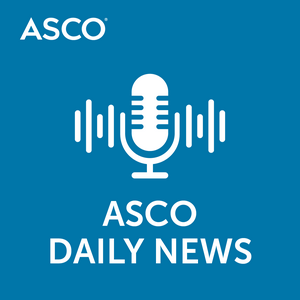
Obtenha o aplicativo gratuito radio.net
- Guardar rádios e podcasts favoritos
- Transmissão via Wi-Fi ou Bluetooth
- Carplay & Android Audo compatìvel
- E ainda mais funções
Obtenha o aplicativo gratuito radio.net
- Guardar rádios e podcasts favoritos
- Transmissão via Wi-Fi ou Bluetooth
- Carplay & Android Audo compatìvel
- E ainda mais funções


ASCO Daily News
baixe o aplicativo,
ouça.


